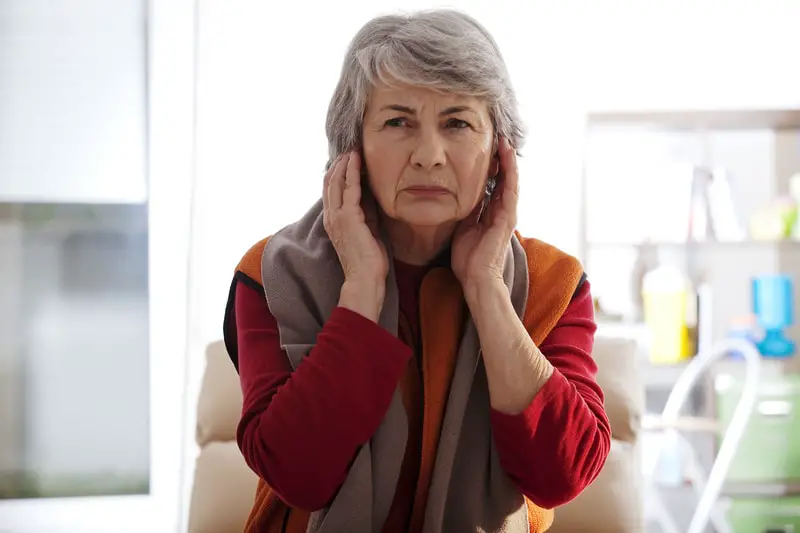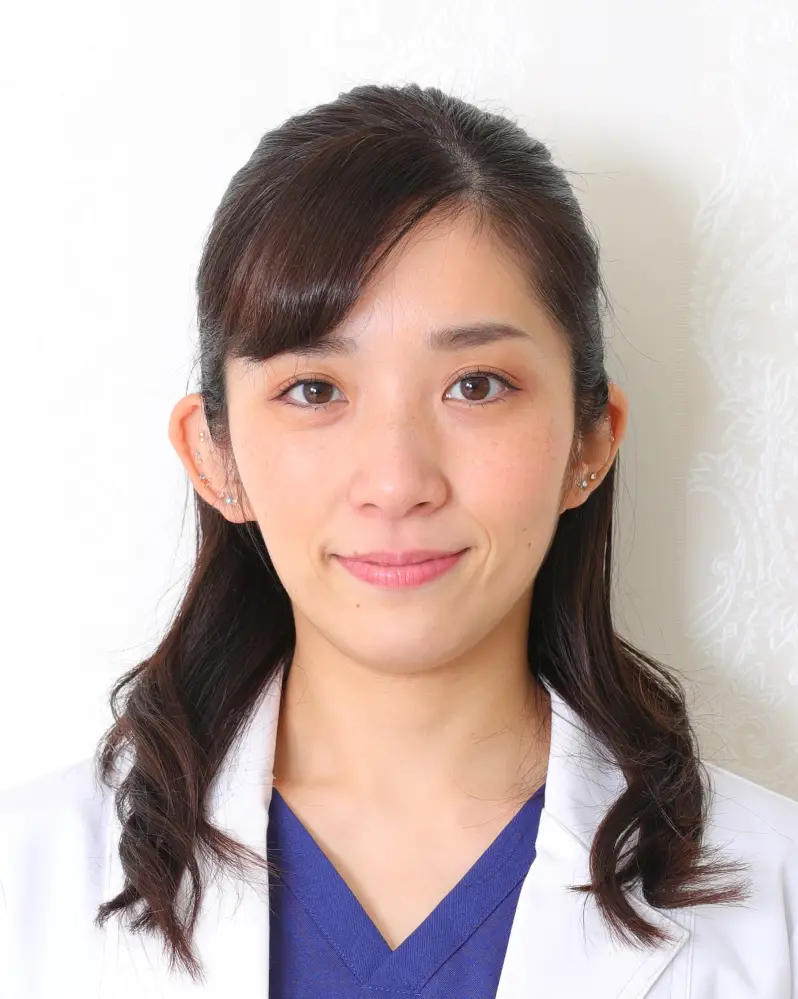According to Mayo Clinic, tinnitus is the experience of phantom noises in your ears with no external cause. Although most commonly reported as a ringing in the ears, tinnitus can also be experienced as buzzing, roaring, clicking, hissing, or humming. Common causes of tinnitus include hearing loss, ear infection or ear canal blockage, head or neck injuries, and some medications such as NSAIDs, certain antibiotics, cancer drugs, diuretics, antimalarial drugs, and antidepressants. Treatment of the underlying cause can provide relief. If, however, you are unsure what the underlying cause is, you may want to try these four acupressure points for tinnitus.
Can Acupuncture Be Used For Tinnitus?
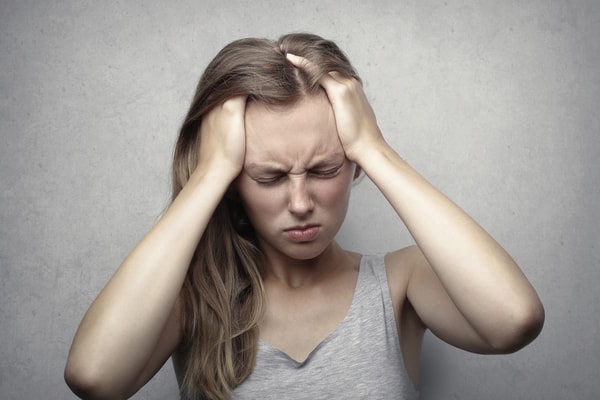
The British Tinnitus Association (BTA) reviewed research on the efficacy of acupuncture as a treatment for tinnitus. English studies reported negative results. And although there was evidence of relief in some Chinese studies, the BTA questioned those studies’ methods. As a result, the BTA concluded that acupressure for tinnitus immediate relief has both limited potential for harm and no evidence of effect.
Tinnitus can be a minor nuisance for some people, but for others, it can disrupt their daily lives. It can vary from a low roar to a high squeal and may occur in one or both ears. Sometimes, it can be so loud that it inhibits a person’s ability to concentrate or hear external sounds.
As you can imagine, this can cause not just stress but also anxiety and depression. Consequently, stress triggers and worsens tinnitus, so learning how to cope with stress and anxiety is beneficial for treatment of tinnitus.
Although research on the effectiveness of acupuncture directly on tinnitus is not supportive, research and clinical trials have shown some positive results for its effectiveness on anxiety. So, acupressure for tinnitus can be indirectly beneficial.
Is There A Pressure Point For Tinnitus?
According to Traditional Chinese Medicine (TCM), tinnitus is related to excessive heat in organs such as the liver, heart, and gallbladder. Therefore, using the acupressure points for tinnitus below can help.
6 Effective Acupressure Points For Tinnitus You Must Try
1. Acupoint: TE-3 (Other Names: Triple Energizer-3/Zhong Zhu/Central Islet)
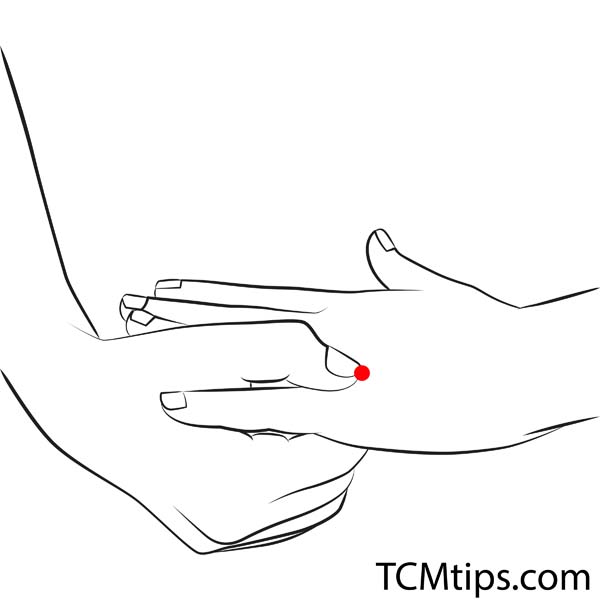
- Acupuncture Point: Triple-Energizer 3 (TE 3, TE3)
- Chinese Name: zhōng zhǔ
- English Name: Central Islet
The first of the acupressure points for tinnitus is TE-3, which is located on the back of the hand, on the outer side of the fourth finger, in the depression next to the fourth metacarpophalangeal joint; or about two to three centimeters below the root of the ring finger and the little finger.
It functions by dissipating wind heat, such as fevers, headaches, red eyes, and sore throat. Remember that, according to TCM, tinnitus is caused by wind heat. TE-3 also clears pathogens from the ears and the eyes, as well as clears the channel and connected vessels, such as those that would cause pain in the hand, wrist, elbow, and shoulder.
This pressure point is one of the most important distal acupressure points for tinnitus for treating any sort of ear disorder, particularly those caused by exterior wind and liver disharmony, such as tinnitus, deafness, or inflammation of the middle ear.
It’s also indicated for overall heaviness of the body and joint pain such as pain of the shoulder, elbow, or spine; numbness in the limbs; and inability to flex and extend the fingers. Additionally, it can be used in the treatment of fever due to malaria.
A study of the relationship between TE-3 and GB-34 used functional magnetic resonance imaging (fMRI) to examine the effects of stimulation of these acupressure points. They found that stimulating both points can excite bilateral acoustic cortices in the brain, which means they could be useful in treating related diseases. In other words, there is preliminary research showing a connection with this tinnitus pressure point.
TE-3 is also often used by TCM practitioners as one of the pressure points for upper back pain.
2. Acupoint: TE-17 (Other Names: Triple Energizer-17/Yi Feng/Wind Screen)
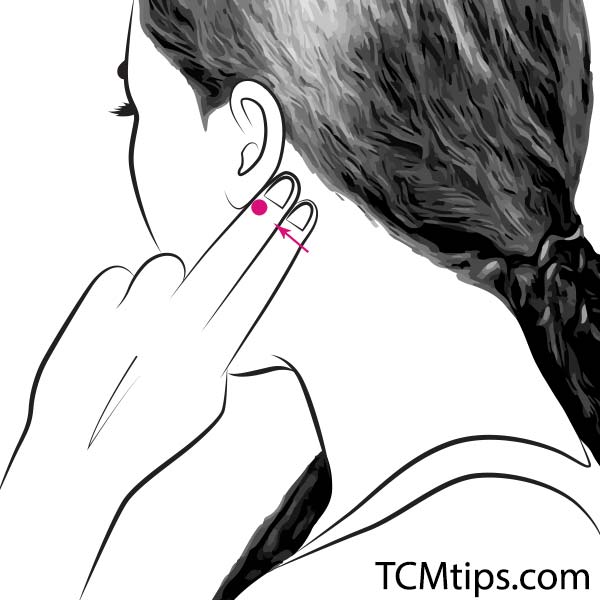
- Acupuncture Point: Triple-Energizer 17 (TE 17, TE17)
- Chinese Name: yì fēng
- English Name: Wind Screen
TE-17 is located behind the ear lobe, in the depression between the mastoid process and the mandible angle. It functions by benefiting hearing and vision. For example, it treats the ear for excess conditions. Additionally, it clears the channel and dispels wind, which aids in facial paralysis and lockjaw.
It is indicated as the main point to treat ear diseases such as tinnitus and deafness. It is also beneficial for toothaches, bell’s palsy, and scrofula. It is the point of choice for problems in the local ear area.
This acupoint is often used in acupuncture for bruxism.
3. Acupoint: Liv-3 (Other Names: Liver-3/Tai Chong/Supreme Rush)
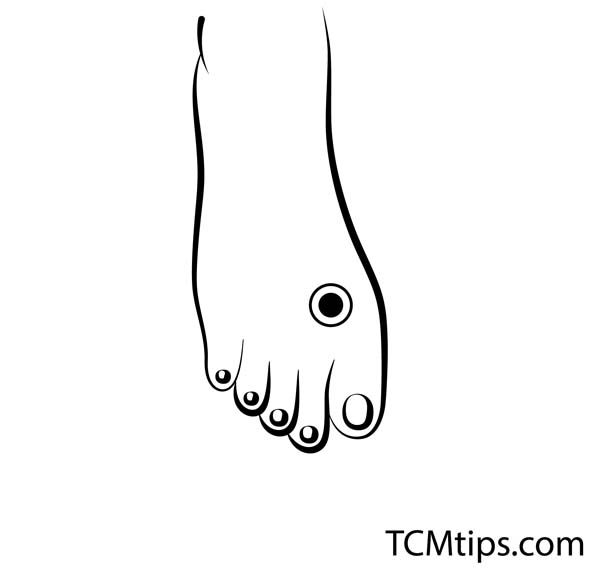
- Acupuncture Point: Liver 3 (Liv 3, Liv3)
- Chinese Name: taì chōng
- English Name: Supreme Rush
Liv-3 is located on the top of the foot in the depression next to the junctions of the first and second metatarsal bones.
Clinically, it is used to resolve stagnation and tonify Yin. This makes it ideal for balancing all pathologies associated with the liver meridian. Again, remember that, according to Traditional Chinese Medicine, tinnitus is related to excessive heat in the liver.
Liv-17 is also a calming point, making it useful in the treatment of conditions such as anger, irritability, insomnia, anxiety, and other psychological issues. A study in the Iranian Journal of Nursing and Midwifery Research found that pressure on Liv-3 reduces anxiety in patients with period pain. They noted that no previous research had been done and recommended that future studies use larger sample sizes, but the results are promising and align with the theories of TCM.
Liv-3 is also one of the acupressure points for hair growth.
4. Acupoint: KI-1 (Other Names: Kidney-1/Yong Quan/Gushing Spring)
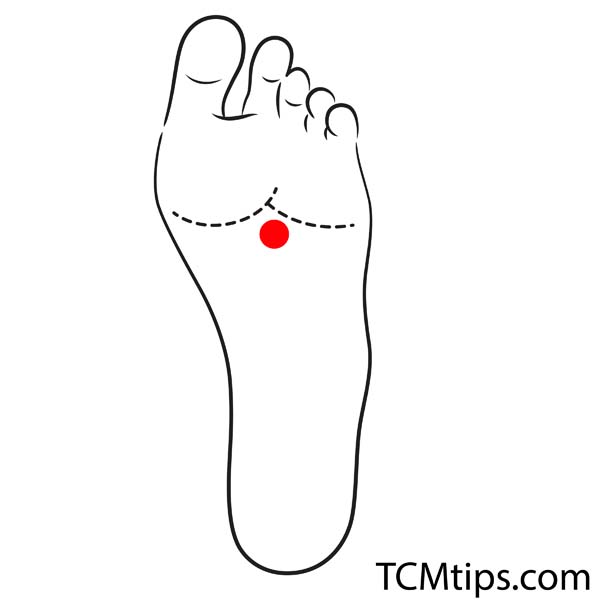
- Acupuncture Point: Kidney 1 (KI 1, KI1)
- Chinese Name: yǒng quán
- English Name: Bubbling Well
KI-1 is located on the bottom of the foot, in a slight depression approximately 1/3 of the way from the base of the second toe and 2/3 of the way up from the bottom of the foot between the second and third toes.
This tinnitus pressure point is the lowest part of the body where Qi, or life force energy, enters the kidney meridian. When energy is ungrounded, it can rise aggressively through the body and create an excess in the upper part of the body. This would be experienced as many physical conditions such as impaired vision, nosebleeds, hypertension, dizziness, and headaches. Additionally, it can also manifest psychologically as confusion, anxiety, mania, stress, panic attacks, agitation, restlessness, insomnia, irritability.
Therefore, it’s easy to see why KI-1 is important. Not only can it be used to treat tinnitus directly, but it also addresses stress and anxiety, which cause and can be caused by tinnitus. It functions by pulling down the Qi to relieve the symptoms. It descends excess from above and is useful for liver yang rising or liver fire, such as that related to headaches, tinnitus, hypertension, and epilepsy.
According to TCM experts, Kidney 1 acupuncture point is the best foot reflexology point.
5. Acupoint: TE-21 (Other Names: Triple Energizer-21/Er Men/Ear Gate)
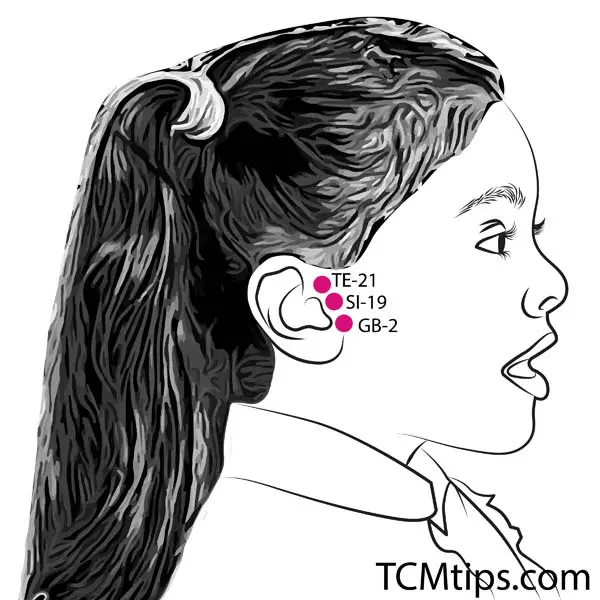
- Acupuncture Point: Triple Energizer 21 (TE-21, TE21)
- Chinese Name: Ermen
- English Name: Ear Gate
TE-21, Triple Energizer 21, or Ermen as it is called in Chinese is another very effective acupressure point for Tinnitus. It is located on the face, beside the ear. It is at the depression that forms at the supra-tragus notch when you open your mouth. By looking at the picture below, you can easily trace it with your forefinger.
In Traditional Chinese medicine, TE-21 wrks by opening the ear, dispersing heat, and alleviating pain. This is why it is suitable for the treatment of deafness, otitis media, and toothache. Acupuncture therapist, Ms. Mai Sogawa, confirms this. According to the therapist, TE-21 is also a famous acupuncture point for treating tinnitus. It helps improve tinnitus by promoting blood flow around the ears.
6. Acupoint: GB-41 (Other Names: Gallbladder-41/Zu Lin Qi/Foot Governor of Tears)
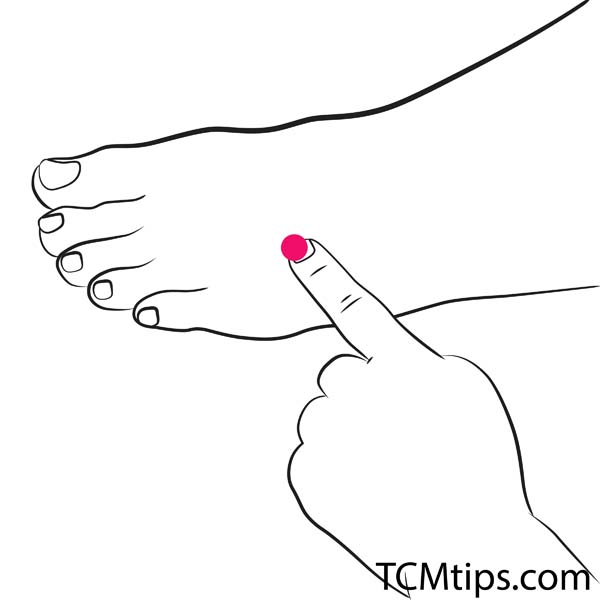
- Acupuncture Point: Gall Bladder 41 (GB-41, GB41)
- Chinese Name: Zulingqi
- English Name: Foot Falling Tears
GB-41 is the last acupressure point for tinnitus. It is located on the surface of the foot between the fouth and fifth metatarsal bones. The best way to locate it is by lifting all your toes up, then tracing a finger towards the junction of the fourth and fifth metatarsal bones. Halfway to that junction is GB-41.
In TCM, GB-41 is responsible for moving the liver Qi, benefiting the eyes ad breasts, and relieving foot pain. These functions are the reason why it is used clinically to treat breast distention, mastistis, migraine, and even tinntus. Ms. Mai Sogawa comments that it is also effective for dizziness and menstrual irregularities as well as in reducing heat, especially around the head.
Summary
It is believed that tinnitus is caused by fatigue and stress, which causes the body to overheat and lack necessary energy. Acupuncture points, which have the effect of lowering fever and calming the mind, will lead to the improvement of constitution and improvement of tinnitus.

Try our Anti-Aging Gua Sha Tool designed to bring out your skin’s natural glow.
Best Gua Sha Product- Anti-Aging: The tool is designed to target 11 specific aging signs such as wrinkles and sagging skin. By following the 7-step routine, users can improve skin firmness and reduce fine lines naturally.
- Enhances Skincare Routine: It works effectively with serums and lotions, boosting absorption and efficacy of skincare products.
- Visible Skin Improvement: Users can expect a smoother complexion, reduced puffiness, and a more youthful appearance.
 P. Sze
P. Sze 